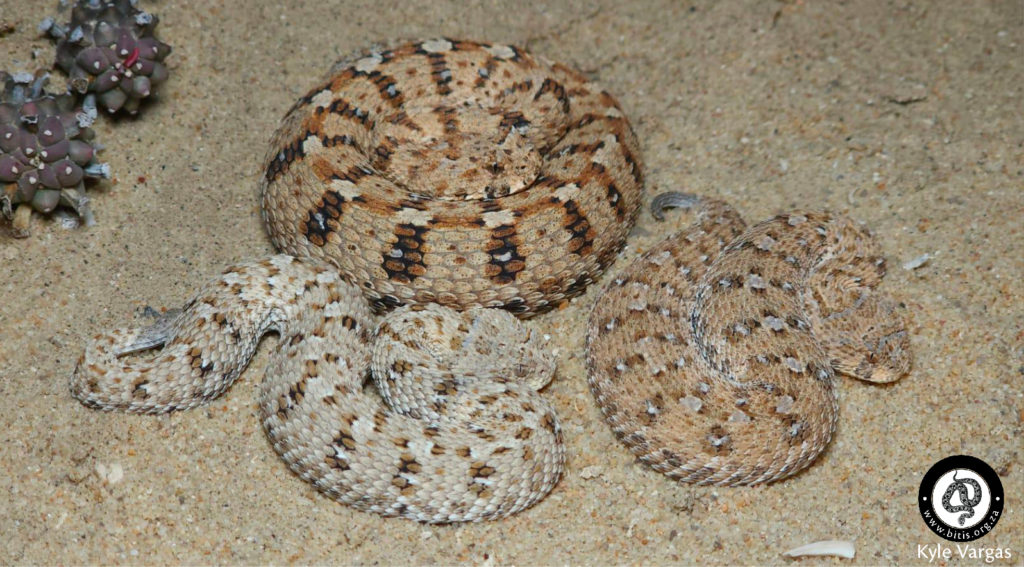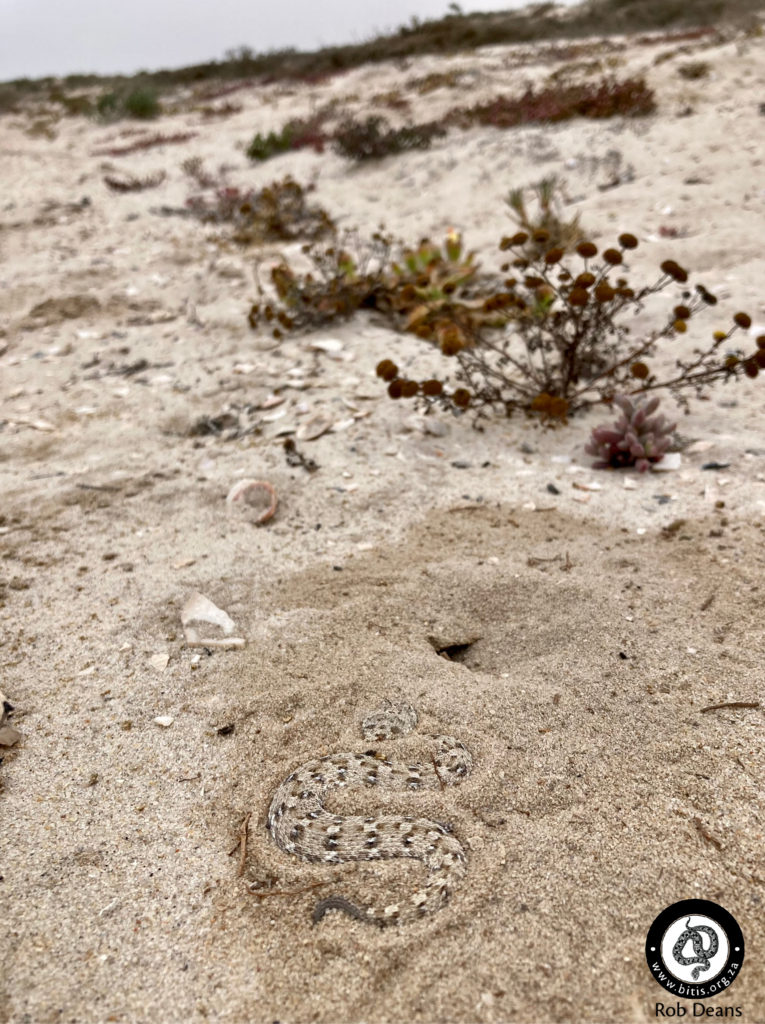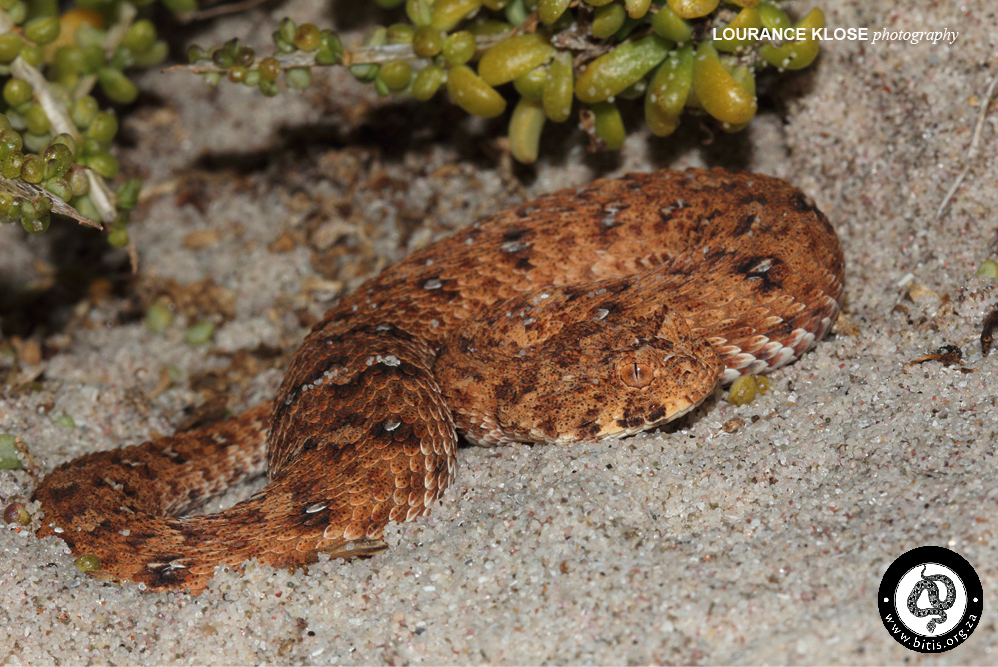Namaqua Dwarf Adder (Bitis schneideri)
Previous names
Vipera schneideri – Boettgers 1886
Bitis caudalis paucisquamatus – Mertens 1954
Bitis paucisquamatus – FitzSimons 1962
Bitis schneideri – Haacke 1975
Holotype – SMF 21019 – “Angra Pequenia”- Lüderitz Bay, Namibia. The Holotype is stored at the Senckenberg Museum, Frankfort, Germany.
Etymology – Boettger named the species in honour of Johann Gottlob Theaenus Schneider, a German classicist and naturalist.
Species history – Described by Boettger from a specimen collected near Lüderitz Bay in southern Namibia (the most northern part of the distribution of this species).
Description – A light sandy brown to grey adder sometimes being dark brown or reddish, depending on the soil it occurs on. This is the smallest adder in the world with the max size at 28 cm. There are usually alternating light and dark bars down the back with a dark light-centred blotches down the sides. These patterns may be reduced in some specimens. The head is rounded and may have some dark mottles.
Natural habits – the smallest adder in the world, this species occupies the sandy habitat of the west coast of South Africa and southern Namibia. It is well-known for sidewinding over the dunes or sandy habitat and will bury itself in the sand and wait for prey such as lizards, geckos and rain frogs. It is mostly found in the dune habitat of the coastal strip of the west coast of South Africa, but extends inland into the vast sand accumulations of the Sperrgebiet of southern Namibia, ending its range at Lüderitz Bay.
Venom – A mild cytotoxic venom that causes some swelling. Due to its small size, this species is not able to deliver large quantities of venom and bites are usually not severe.








